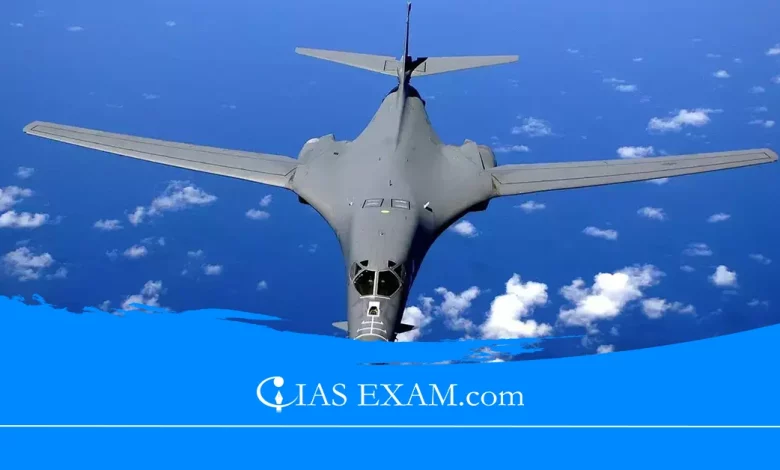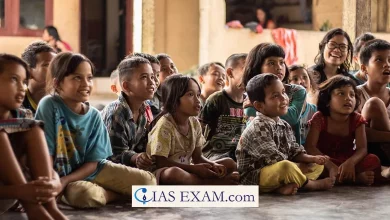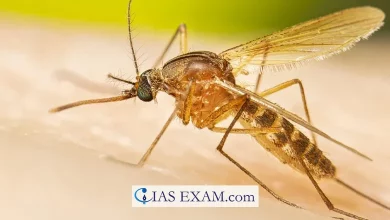Daily Current Affairs for UPSC
International arms transfers report by the SIPRI
Syllabus - International Relations [GS Paper-2]

Context
As per the latest data on international arms transfers has been released by the Stockholm International Peace Research Institute (SIPRI), India was the world’s top arms importer between 2019-2023.
Key Highlights
- India continues as the world’s largest arms importer no matter ongoing efforts to strengthen its defense-industrial base.
-
-
- Between 2019 and 2023, the country accounted for a significant 9.8% of the total international arms imports.
-
- Steady increase in arms import
-
-
- 4.7% increase in India’s arms imports among 2014-18 and 2019-23.
- This increase is partly attributed to emergency procurements made in reaction to the extended army standoff with China.
-
- Changing Dynamics in Arms Suppliers
-
-
- Russia (historically been India’s primary arms provider), still accounted for 36% of its arms imports.
- However, this trend is shifting, with India increasingly diversifying its assets to encompass Western countries and domestic producers.
- The report highlights that the duration among 2019-23 marked the first 5-12 months span considering that 1960-64 wherein Russian deliveries comprised less than half of India’s arms imports.
-
- Growing Role of Western Suppliers
-
-
- France and the USA are rising as key suppliers to India, together accounting for 46% of its arms imports.
- This trend is expected to continue with significant contracts in the pipeline, such as India’s procurement of 31 armed MQ-9B Sky Guardian drones from the US and 26 Rafale-M fighters from France.
-
- Global Arms Trade Landscape
- Top importers
-
-
-
- India is accompanied by Saudi Arabia, Qatar, Ukraine, Pakistan, Japan, Egypt, Australia, South Korea, and China.
-
-
- Top exporters
-
-
-
- United States leads with a 42% share, followed by France and Russia.
-
-
- India’s Role as a Major Arms Customer
-
-
- India emerges as the biggest arms purchaser for France, Russia, and Israel, indicating its significant role in international arms procurement.
- This underscores India’s reliance on various resources for its defense wishes, reflecting its geopolitical positioning and security concerns.
-
- China’s Dominance in Supplying Pakistan
-
- China performs a pivotal role as the primary hands dealer to Pakistan, with a great 61% of its exports directed toward Islamabad.
- Additionally, China exports 11% of its hands to Bangladesh, further solidifying its influence in the region.
Challenges faced by India in Indigenous Production
- Projects under Strategic Partnership (SP) version have not materialised yet
-
-
- Despite efforts to promote indigenous defense manufacturing, which include the ‘Make in India’ initiative, challenges persist. None of the ‘Make in India’ tasks under the strategic partnership model have materialized yet.
- SP model is a framework introduced by the Indian government to encourage collaboration between the general public & non-public sectors within the protection enterprise.
- Under this version, non-public corporations are decided on as strategic partners to paintings along the government-owned defense entities in the development & manufacturing of key defense platforms and systems.
-
- Need for Overhaul in SP Policy
-
-
- Key areas for development encompass a reassessment of the pricing methodology, making sure long-term orders to maintain manufacturing, and addressing other bottlenecks that restrict task implementation.
-
- Low Foreign Direct Investment (FDI) in Defense
-
- India’s protection sector has attracted only a meagre Rs 5,077 crore in FDI since its opening to non-public agencies in 2001.
- This is despite the government’s efforts to liberalize FDI policies, permitting as much as 74% by the automated direction and up to 100% through the government direction in 2020.
Stockholm International Peace Research Institute (SIPRI)
- It is an independent international institute dedicated to research into conflict, armaments, arms control and disarmament.
- Established in 1966, SIPRI is based in Stockholm, Sweden. It is regularly ranked among the most respected think tanks worldwide.
- Its project is to:
- adopt research and sports on protection, warfare and peace;
- offer coverage evaluation and recommendations;
- facilitate talk and build capacities;
- promote transparency and responsibility.
Conclusion
- India’s reputation as the sector’s top arms importer underscores the need for strategic reforms to enhance its defense-industrial base and decrease reliance on foreign suppliers. As the country maintains to navigate geopolitical challenges, fostering a sturdy home defense production zone can be critical for achieving long-term security dreams.
Source: The Hindu
UPSC Mains Practice Question
Q.“The world is becoming an unsafe place and that means security must assume topmost priority.” Discuss the statement in the light of the need of defence sector reforms in India. (250 words)





.png)



